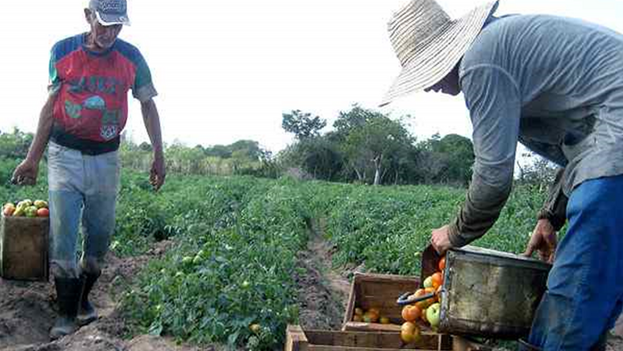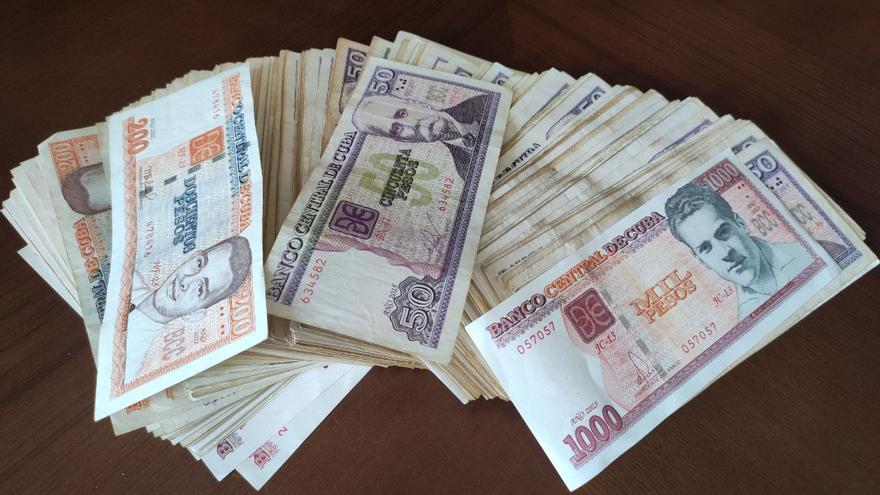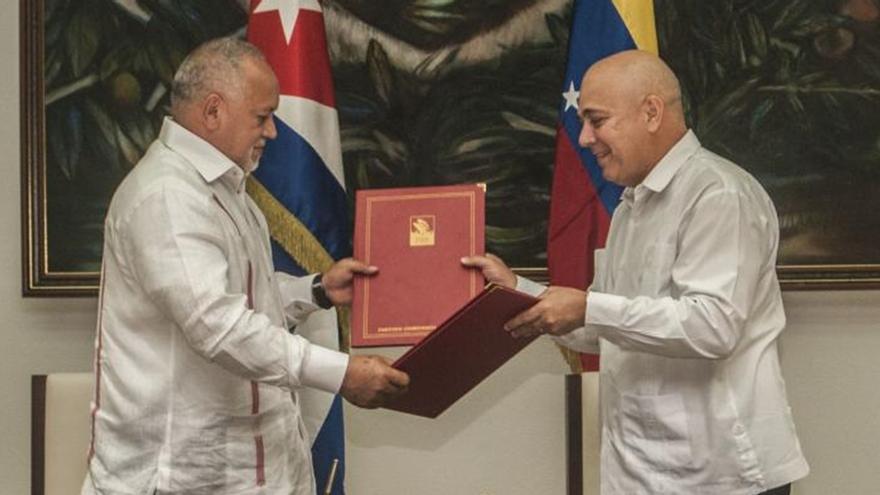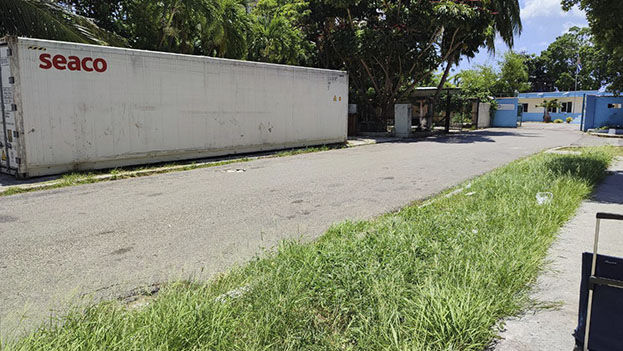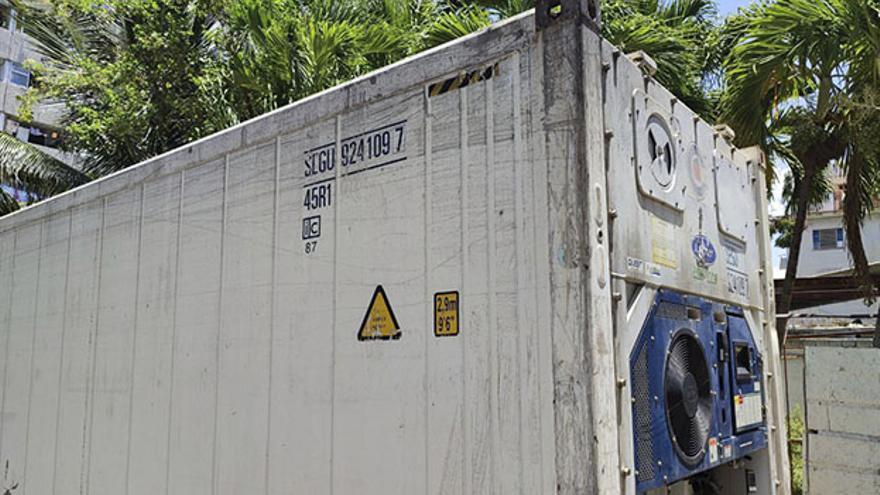With Randy Alonso serving as genial host, guests repeatedly emphasized that “banking reform [la bancarización — roughly ’bankification’] will be a gradual process and carried out as conditions allow.” This stood in contrast to the harsh expropriations and the potentially frozen accounts that would have occurred under Resolution 111. So banking reform has been sidelined. Another experiment gone bad.
The program took the form of a pep talk by the regime, one that was undoubtedly intended to neutralize widespread criticism among the public at large. That is why the interviewees insisted that “there is no possible turning back from the gradual process of banking reform and electronic payments in the country,” a position also held by the Central Bank of Cuba (BCC), the Bank of Credit and Commerce and the Ministry of Communications, but one that had not been openly discussed. Rather, it had all been hastily adopted, with no thought given to a more gradual approach or sector-specific considerations.
Speaking in dulcet tones on behalf of the BCC, Julio Antonio Perez, general director of Operations and Payment Systems, said banking reform was being carried out to “create facilities in banking services integrated with electronic payment options.” He reiterated that this was “a gradual process involving not only the bank but also all the central administrative bodies of the state. continue reading
In his opinion, the goal of new banking regulation is to facilitate the use of electronic payment options. “It is not about reversing the processes that have been in place until now,” Perez said. Likewise, he pointed out that the training process for bank personnel had been completed and that this would allow for better performance at local banks and better service for customers.
In what amounted to a mea culpa, he spoke of the need to come up with “a good communication strategy” and insisted that the process would not be implemented the same way everywhere, nor would the same criteria be applied universally. Banking reform would proceed only when conditions are right. What aroused viewers’ doubts was that he did not explain what those conditions might be.
In his remarks, Perez explained how the various elements of the country’s digital payment system — ATMs, point-of-sale terminals, telephone banking, remote banking, payment gateways such as Transfermóvil and Bolsa MiTransfer, as well as Enzona — work. He pointed out that Cubans with a bank account have been able to pay their telephone and electricity bills without having to wait in line since the early 2000s. This was an indication, he noted, that electronic banking has been very beneficial. “It provides security, greater efficiency, savings and more transparency. And the customer does not have to worry about finding a branch bank nearby,” he said.
Perez also provided another very interesting piece of information, pointing out that in 2019 most payments were made using cash, more than 88% of the total, while in 2022 the number of digital transactions rose to more than 63%. Additionally, that same year, 200 million transactions were done electronically, predominantly through Transfermovil. In 2023 so far, that number exceeds 130 million. Clearly, there is still room for growth.
“The use of cash is not being eliminated,” he explained in regards to Resolution 111. “This is our currency. Furthermore, nowhere in the world has it been possible to eliminate cash, though the trend has been to increase the use of electronic payment options. This is a gradual process. There are sectors such as fishing and farming that lack the infrastructure for it. Therefore, it would be irrational to undertake these actions.” One of many obvious about-faces that night.
Likewise, he clarified that the 5,000-peso-per-transaction limit applies only to businesses, noting that the amount is higher than the previous limit and does not apply to private individuals. He pointed out, “We are already seeing a closer relationship between business customers and bank branches. All these actions will be governed by contracts between the business entity and the bank.” A closer relationship? Where’s the data. This does not reflect reality.
He acknowledged that, though these steps represent a path towards greater security, the use of QR codes and other means of electronic payment between businesses is still in its infancy. For this reason, he pointed out, “Banking will empower the economy and encourage the growth of banking for the good of the country. It is not intended to limit businesses at all but to facilitate operations between the bank and its customers.”
Perez noted that, even though the level of service has not always been up to par, ATM use has increased. A bit of consolation. He is thankful that many banks have extended their hours to include non-business days, adding, “The intention was not to create problems for banks. We are making efforts to ensure that every banking entity receives the required level of speed and attention. This involves a process of office reorganization. We are not immune to organizational problems. We are designing offices to focus their efforts on business customers, as the banks used to do.” More confusion over what these changes mean, though, obviously, they are to be accompanied by personnel reductions. Get ready.
Next to be interviewed was Alexis Trujillo, president of the Bank of Credit and Commerce (BANDEC). “This week our branches became aware of public concerns over how the measures were being implemented and where the process of bank reform was headed,” he said. “Therefore, we have been working to respond to these concerns both in person and through the bank’s communication platforms.”
“The process of banking reform is a gradual one, whose aim is to promote the use of electronic payment options,” said Trujillo, echoing comments by the head of the BCC. He added that now is the time to identify ways in which the system has failed despite the extensive training process and on which work is already underway. In this regard, he said that BANDEC works with various economic entities, especially the agricultural and livestock sectors, which have specific ways of working, with daily payments, etc. He said that the doubts and concerns expressed by businesses in these sector will, little by little, be addressed.
Trujillo said he does not believe the work of rural farmers’ operations, or their ability to turn a profit will be negatively impacted by the program. He pointed out that the same applies to MSMEs and local development projects linked to the bank, noting that there are many specific considerations in the relationship between individual customers and banks, between self-employed workers and banks, and each case requires a different approach.
Trujillo noted that in 2019 BANDEC had issued 1.8 million cards. Today that number exceeds 5.5 million, an increase of 197%. He said that, for several years, the bank has been encouraging the use of its remote banking service, Virtual BANDEC, which allows individuals and companies to access the bank without having to go to a branch. He added that 79% of the MSMEs and local development projects that work with the bank have signed up for the Virtual BANDEC service and he believes they are already using it. The only thing left to do is to limit the number of cash transactions by transferring them to Virtual BANDEC.
Trujillo said the bank understands that it needs to reduce the use of cash, which will continue to play a role but will not have a large impact on economic activity. In addition, he expressed appreciation for the willingness and motivation of officials and employees at bank branches to implement these measures. Though the training process has been completed, the large number of customers at bank branches is still problematic. Whatever dissatisfaction with long lines there might be, he believes banking reform measures will help to alleviate it reasonably quickly.
Next to be interviewed on Mesa Redonda was Ernesto Rodriguez, vice-minister of Communications. Speaking in political and ideological code, he said, “The development and expanded use of electronic payments is a digital transformation priority, on which work has been done based on the same policy of societal computerization.”
It was as though he had not been listening to the two previous guests. Rodriguez began by saying that infrastructure capabilities have been expanded to support these processes and that their development must be allowed to continue to the extent that economic conditions permit. It was as though he had never tried to log on to the internet in Cuba in his life or had forgotten how often power outages occur.
Undaunted and relying on a previously written speech, Rodriguez said his job was to “make investments and work on networks and infrastructure. Nothing could be viewed in isolation. Everything is a system that encompasses communications and private data networks as well as access to terminal devices, where operations such as a telephone, a computer, a point-of-sale terminal are generated.” He closed by citing the need for digital platforms, adding that it is not just about having them but also about increasing the efficiency of the service.
He also provided some interesting data points, noting that 83% of locations where Cubans live have cell phone coverage, which allows banking operations to be carried out using Transfermovil, one of two Cuban electronic payment platforms. Transfermovil uses a cell phone signaling channel and is available wherever there is coverage. Another astonishing fact that he pulled out of his sleeve is that 50% of locations in Cuba have 4G coverage and 75% have 3G, noting that this allows transactions to be carried out not only by Transfermovil but also by Enzona, the other payment platform.
Rodriguez highlighted the two national payment platforms, which he described as a true strength and a national achievement. He expressed pride in their ability to provide technical support and to evolve, which is especially notable for a new generation of services.
As an example, Rodriguez cited Transfermovil’s mobile wallet which, in his opinion, is at the forefront of Cuba’s banking capabilities. The magnetic card allows customers to do their banking “from the comfort of the telephone.” He reiterated that both Transfermovil and Enzona have different access routes. Transfermovil uses a signaling code while Enzone uses the internet’s data network. Both are free to customers.
He said that Transfermovil processed 444 million transactions in 2022. There were also account balance inquiries, databases to maintain and service costs to pay, tasks that would typically put stress on telecommunication systems.
Similarly, Enzano reported roughly 45 million transactions last year. Meanwhile, Transfermovil has completed more than 400 million service requests in 2023 so far and the forecast is that it will close out the year with a billion, more than double the number to date.
Transfermovil handles roughly twenty-nine transactions a second. Projecting forward, that comes out to almost three million transactions a month this year. Operations like this can only be handled with a high-volume infrastructure. “Electronic payments for things such as electricity, telecommunications, taxes, water and liquefied gas have been steadily growing in recent years,” he pointed out. [In 2023 so far] “more than 80% of payments for communication services have been made electronically, while 40% of electric bills and 60% of taxes were paid this way.”
According to Rodriguez, these numbers illustrate the level of trust and confidence users have in the system but also the sense of well-being they have when they can pay for services electronically. What is important now is these types of these payments become more common.
“It all depends on how willing we are to do it, to create a culture. We have the talents of more than 600 Youth Clubs, which are located in every municipality across the country. Likewise, we have the 8,000 members of the Cuban Union of Informaticians to help at every step along the way,” Rodriguez said.
He also highlighted the importance of higher levels of security on these payment platforms. To achieve this, tighter security controls are being introduced, including protection mechanisms for bank accounts, transactions and personal data.
Recent efforts to strengthen of the system’s structural underpinnings have provided more reliable data, thereby improving security. Tools to deal with inconveniences that crop up have also been improved, allowing managers to identify their causes swiftly and transparently. He also said training has been provided on the responsible use of these platforms and on how to carry out operations safely.
On how to encourage more electronic commerce in Cuba, Rodriguez repeated his opening remarks, stating that “it is up to everyone,” that those who have already adopted it must prioritize its use, starting with the service provider. “It is also vital that average citizens, who have already seen its advantages, exercise their right to pay digitally wherever the system has been set up, he added”
Near the end of the program, Rodriguez once again reiterated the central argument of the night and the reason for his appearance: banking reform is a gradual process.
My own take is that you can forget about repression, the iron fist, expropriations and so on. The regime has backtracked in a very obvious way. Trust me, the banking reform process, like many previous economic experiments, is being sidelined. This is not the currency unification, we already said that in another blog entry so you have to be careful.
Rodriguez closed by spouting nonsense. “All of us involved in the process are also working very rigorously in addressing citizens’ concerns and problems, and are pulling together,” he said at one point, adding “We can aspire to have an increasingly modern country, with a digital transformation that goes beyond conceptual issues, and citizens are seeing it in practice, enjoying the advantages and benefits.”
It was a long and interesting episode of Mesa Redonda that confirms that banking reform, just as we had feared, is being buried. Congratulations.
____________
COLLABORATE WITH OUR WORK: The 14ymedio team is committed to practicing serious journalism that reflects Cuba’s reality in all its depth. Thank you for joining us on this long journey. We invite you to continue supporting us by becoming a member of 14ymedio now. Together we can continue transforming journalism in Cuba.

![]() 14ymedio, Havana, 11 August 2023 — Former Cuban political prisoner Nelson Molinet Espino, 59, was found dead in Florida, where he had lived for years, after disappearing for several days, according to his good friend Normando Hernández, general director of the Cuban Institute for Freedom of Expression and Press and announced on Facebook this Friday.
14ymedio, Havana, 11 August 2023 — Former Cuban political prisoner Nelson Molinet Espino, 59, was found dead in Florida, where he had lived for years, after disappearing for several days, according to his good friend Normando Hernández, general director of the Cuban Institute for Freedom of Expression and Press and announced on Facebook this Friday.

